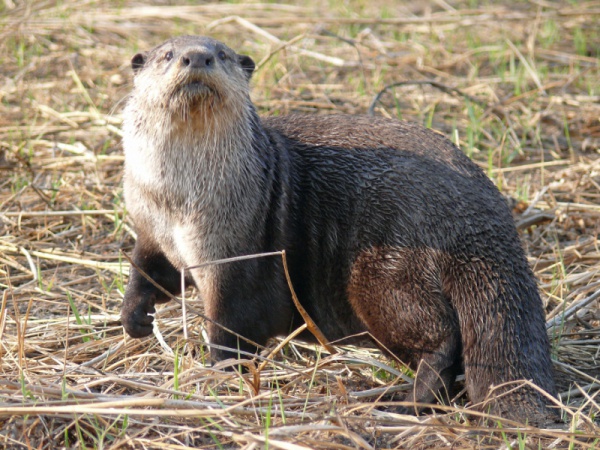Facts About African (Cape) Clawless Otter
The African clawless otter, also known as the Cape clawless otter or groot otter, is the second-largest freshwater otter species. These captivating creatures inhabit savannah and lowland forest areas near permanent water sources throughout most of sub-Saharan Africa, except for the Congo River basin and arid regions. Their partly webbed, clawless feet lend them their distinctive name. They belong to the weasel family (Mustelidae) and the order Carnivora. Notably, the species Aonyx capensis is closely related to the extinct giant Sardinian otter, Megalenhydris.
According to the reference work, "Mammal Species of the World" there are six recognized subspecies of African clawless otters. These otters boast thick, smooth fur, typically a chestnut coloration, with distinctive white facial markings. Their partially webbed paws facilitate their aquatic lifestyle. Primarily nocturnal, these otters build burrows near water to ensure easy access to shelter and food. Their diet mainly comprises aquatic animals such as crabs, fish, frogs, and worms. While generally solitary, they can occasionally be found in family groups of up to five individuals.
Female African clawless otters give birth to litters ranging from two to five young, which the mother raises alone. The gestation period lasts around two months, and the young are weaned between 45 and 60 days. These otters reach full maturity at about one year of age. Natural predators, including pythons, crocodiles, and fish eagles, pose significant threats to them. To regulate their body temperature, they spend time in water to stay cool and rely on their thick fur for warmth.
Human activities, however, present the most significant threats to African clawless otters. These threats include hunting for their pelts, accidental entanglement in fishing nets, and habitat destruction due to logging. Additionally, overfishing can deplete their food supply, adversely affecting their populations. In South Africa, the Otter Trail, located within the Tsitsikamma National Park, is named in their honor, where these animals are afforded protection.
These fascinating creatures play a vital role in their ecosystems, and conservation efforts are crucial to ensure their survival amidst the challenges they face.

 Namibia
Namibia